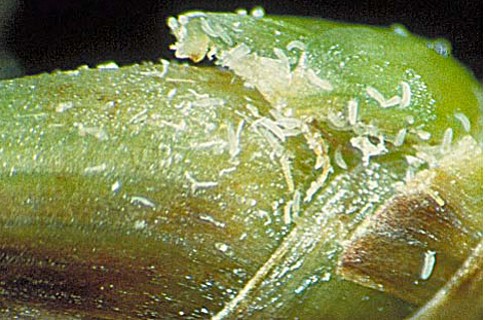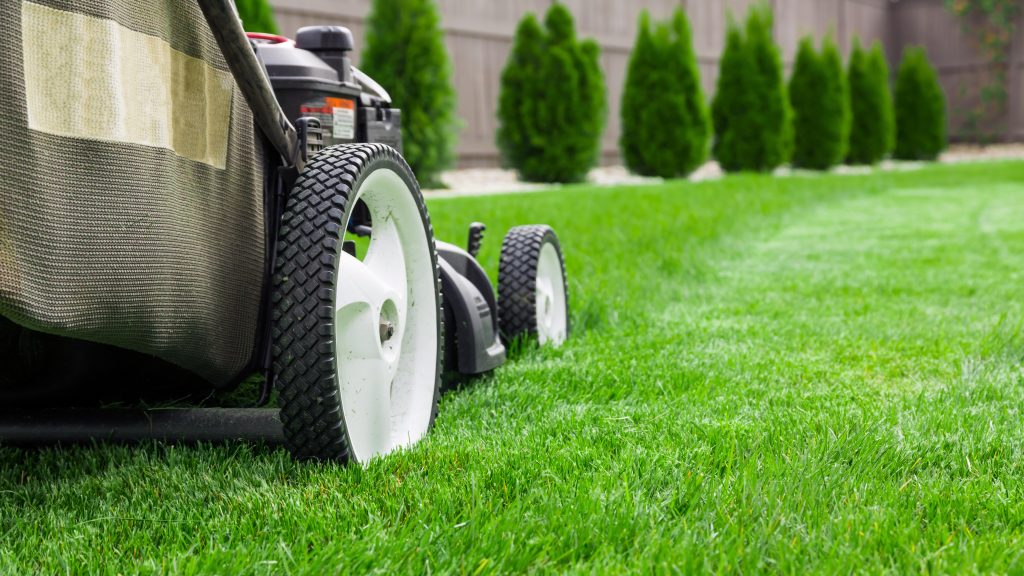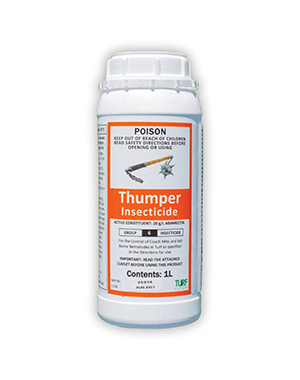What Are Parasitic Wasps & How Can They Help Your Lawn?
The name ‘Parasitic Wasps’ is unnecessarily terrifying, because the truth is that the presence of these bugs around your home might be both an indicator of an outbreak of ...

 Couch Mites are tiny pests that are visible only through a magnifying hand lens or microscope.
Couch Mites are tiny pests that are visible only through a magnifying hand lens or microscope.
The translucent bodies of juvenile mites are just 0.1mm to 0.15mm long and the cream/white adults measure up to 0.2mm.
They hide in the leaf sheath of Couch grasses – a habit which gives them their name – and feed on new growth. Other common names are Bermudagrass Mite and Bermudagrass Stunt Mite.
The first sign of Couch Mite damage is yellowing of leaf tips, followed by shortening of the internodes and leaves. This results in tufted growth known as “witches’ brooms”.
If you keep a close eye on what’s happening in your garden, you’ll be more likely to see this damage early and have a better chance of controlling an outbreak of Couch Mite.
Having said that, the appearance of even small areas of damage is an indicator of a heavy infestation of Couch Mite.
Left unchecked, Couch Mites breed quickly, and it can take only a matter of days for their population to explode and spread widely.
They can be spread by wind, on grass clippings, or piggyback on other turf insects.
Damage from Couch Mites is usually most severe in mid-spring to late summer, during hot, dry conditions.
Eventually, the infested turf becomes thin, with bare spots, and weeds appear.
Stunted growing points often die in winter, and the damaged stems and stolons do not produce new shoots.
Some lawn varieties don’t develop witches’ brooms, so carefully peel back the leaf sheaths to check for stem damage in areas of Couch that are thinned or appear stressed.
 Garden hygiene is essential for minimising the spread of pests such as Couch Mites.
Garden hygiene is essential for minimising the spread of pests such as Couch Mites.
Closely mow any affected areas to remove damaged grass. Clean and wash down your mower, and collect and discard the lawn clippings so the Couch Mites can’t relocate to nearby turf.
After mowing, apply a suitable insecticide. Be aware that repeat applications may be necessary to ensure you cover multiple generations of Couch Mites.
When looking for products to control Couch Mite ensure they contain the active ingredients abamectin, diafenthiuron, clofentezine or beta-cyfluthrin.
To prevent Couch Mites from developing resistance, after three applications switch to another type of miticide containing a different active ingredient.
Be aware that most miticides are non-discriminatory and will also wipe out beneficial insects.
Always read the safety directions and instructions on the product label before use.
Pyrethrin sprays offer an organic means of tackling Couch Mites by disrupting their nervous system.
Neem Oil extract applied as a foliar spray is also effective.
Used properly it is safe for humans and does not target beneficial insects such as bees, butterflies and ladybugs.

Thumper 1L is a fast-acting insecticide that provides long residual control of Mites and Soil Borne Nematodes in lawns. Thumper is suitable for use on Zoysia, Kikuyu, Couch, Buffalo grasses. Always read the safety directions and instructions on the product label before use.
SHOP NOW
Indigo Malice Duo 1L is a combination insecticide with the active ingredients of Clofentezine (187.5g/L) and Abamectin (18g/L) and an application rate of 14mL/100sqm. Indigo Malice Duo 1L only focuses on the control of Couch Mite in Couch lawns. Always read the safety directions and instructions on the product label before use.
SHOP NOWA spray kit is a fast and effective way to apply all your liquid lawn care products; an easy to use option is the Solo 7L Manual Sprayer that comes with a quality pressure sprayer. Spray indicators such as Blazon allow you to clearly identify where you have applied the spray. myhomeTURF also recommends a surfactant such as Wetter 600 to increase the activity and efficiency of liquid chemicals.
A healthy lawn is better equipped to quickly recover from mild pest infestations. Help your lawn recover by watering and fertilising appropriately. Avoid using too much nitrogen fertiliser and don’t cause stress to your lawn by mowing it too short.
Encouraging beneficial insects, such as Parasitic Wasps, Flies and Predatory Mites, can help keep Couch Mites under control.
Always read the safety directions and instructions on the product label before use.